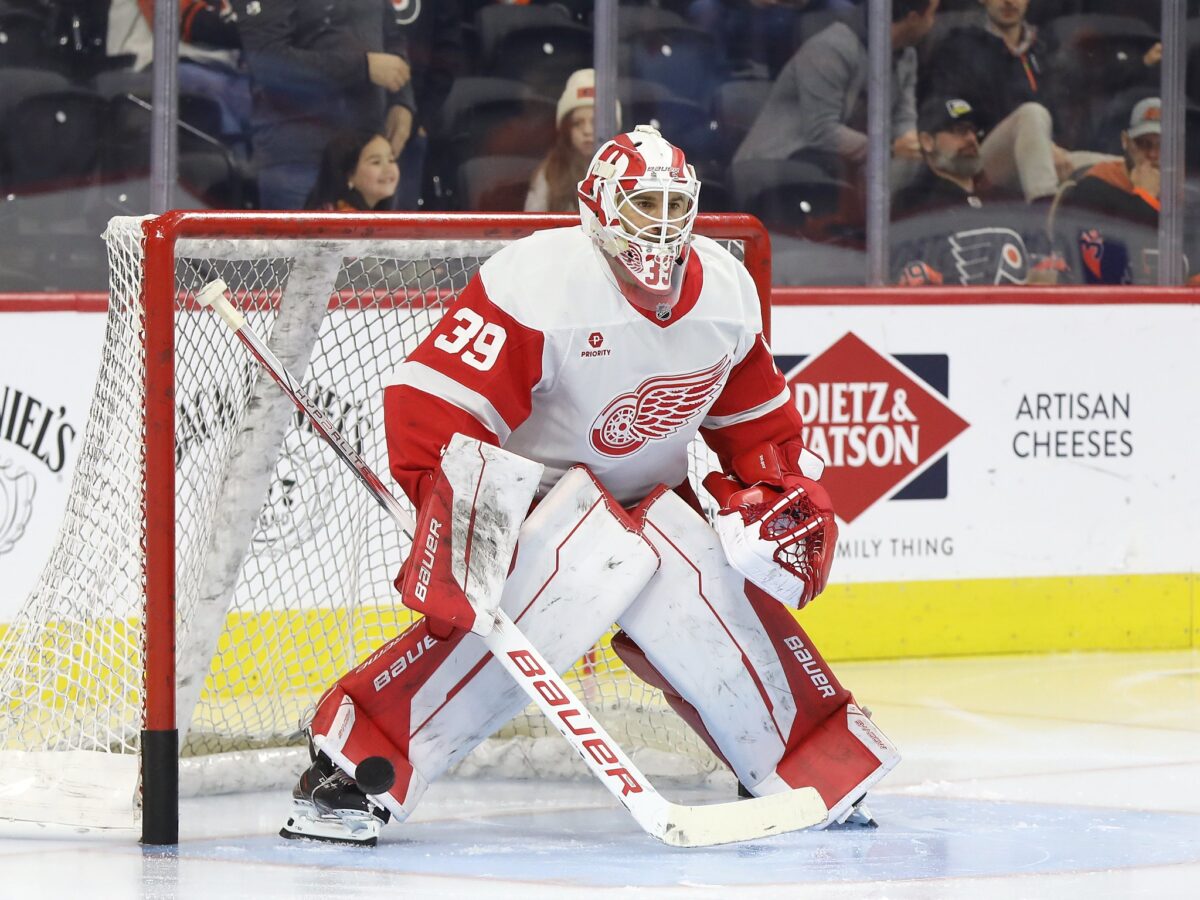Detroit made headlines this offseason by trading for veteran goaltender John Gibson from the Anaheim Ducks in exchange for Petr Mrazek and two draft picks. The move signalled that the Red Wings wanted stability in net. But early returns this season suggest the competition in the crease might already be tilting in favor of Cam Talbot.
Talbot’s early 2025-26 numbers are very strong: 2-0-0, a 2.11 goals-against average (GAA), and a .925 save percentage (SV%). In two starts, he’s shown consistency, composure, and the ability to steal games even when Detroit’s offense isn’t dominant. Meanwhile, Gibson’s early stat line is rough: one start, five goals against on 13 shots, resulting in a GAA of 8.06 and a .615 SV%. If those numbers held (which is unlikely in the long term), they would be alarming for a goalie expected to carry a major load.
Related: Red Wings Notebook: Early Observations on Sandin-Pellikka, Special Teams & More
That contrast in early performance matters for a few reasons:
- Momentum and confidence: Goaltenders thrive on rhythm. Talbot, looking sharp early, gives him the psychological edge.
- Risk vs. reward: Talbot is older and has experienced his share of ups and downs throughout a long career. But Gibson has health and consistency concerns in 2024-25; he played just 29 games.
- Roster flexibility: If Talbot earns the starter’s role, Detroit can lean on Gibson in relief or spot starts, alleviating some pressure on him to be perfect.
How Talbot Has Earned It
There’s more than just statistics behind Talbot’s case. His performance in recent games gives even more credibility:
- In Detroit’s 6-3 comeback win vs. the Toronto Maple Leafs, Talbot made 20 saves and even registered an assist on Simon Edvinsson’s empty-net goal.
- In their 3–2 win over the Maple Leafs, he stopped 38 shots, denying Toronto many high-danger opportunities.
These are not just garbage-time saves. These are late-game stops and pressure moments against quality competition. That matters immensely when you consider which goalie should carry key minutes.

Talbot’s contract and cap hit also give Detroit some room. At $2.5 million, he offers a veteran option without breaking the bank. If he can deliver, he could be a low-risk, high-reward starter this season.
Why Gibson Was Acquired (and Can Still Matter)
It’s worth reminding why Detroit traded for Gibson in the first place. He’s a proven starter with strong stretches in his career at times among the NHL’s best. The Red Wings believed he could be their answer long-term, provided health and consistency cooperate.
John Gibson’s strengths include rebound control, positioning, and experience in high-load seasons. He’s also on a multi-year contract, making him too expensive to simply bench. Even if Talbot becomes the primary starter, Gibson can still offer value in a 30–35 game role, giving the Red Wings flexibility and depth.
Challenges for Talbot & Things to Watch
Talbot is no spring chicken. At 38, fatigue and consistency will be real factors. Detroit will need to manage its workload and prevent overuse that could lead to injury or decline. Also, long playoff runs demand depth; having Gibson as a capable backup is still a big plus.
Detroit’s defense and special teams will also influence how sustainable Talbot’s play is. The more they limit high-danger chances and support the goalie, the more room Talbot has to succeed.
Verdict: Starter or Timeshare?
Based on early data and performance, one could make a strong case that Talbot should be Detroit’s starter, at least for now. His hot start, veteran presence, and contract make him a worthy candidate. But Gibson’s presence, pedigree, and upside mean this likely won’t be a clean transition. It’s more likely that we’re watching a season-long duel, where performance, health, and confidence will decide who shoulders the bulk of the starts.
If Talbot continues delivering at this pace, the conversation will shift from “Can he be the starter?” to “Should Gibson even play?” For now, Talbot has more momentum and that matters a lot in the present moment.
